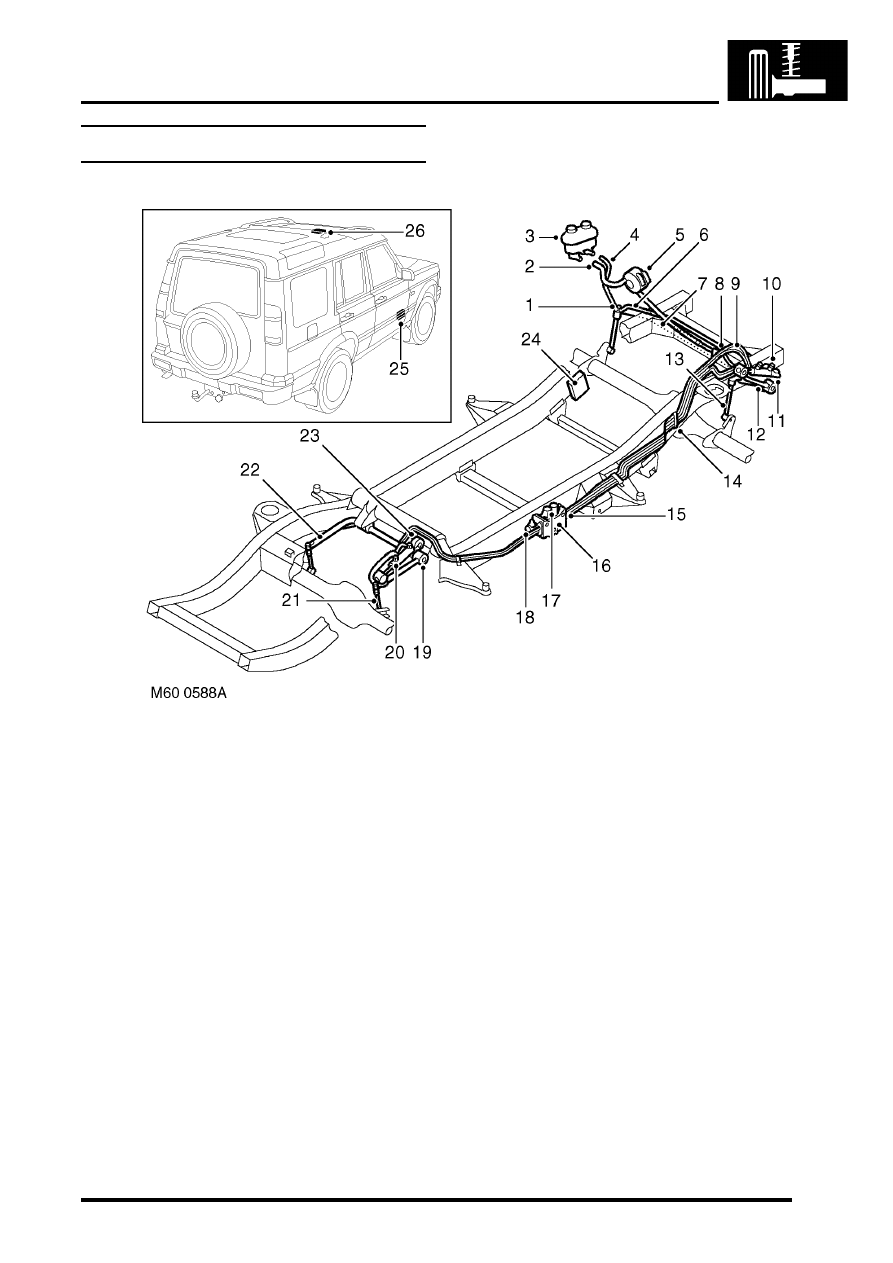Discovery 2. Manual - part 181

FRONT SUSPENSION
DESCRIPTION AND OPERATION
60-7
DESCRIPTION AND OPERATION
ACE system component layout
1 Anti-roll bar link
2 Suction hose
3 ACE/PAS reservoir
4 Return pipe
5 ACE pump
6 Pressure pipe
7 Torsion bar - front
8 Actuator hose
9 Actuator hose
10 Actuator
11 Short arm
12 Long arm
13 Anti-roll bar link
14 Isolator and bracket (2 and 4 way) 7 off
15 Pressure transducer
16 Valve block
17 Directional control valve 2 off
18 Pressure control valve
19 Long arm
20 Actuator
21 Anti-roll bar link
22 Torsion bar - rear
23 Short arm
24 ACE ECU
25 Accelerometer - lower
26 Accelerometer - upper